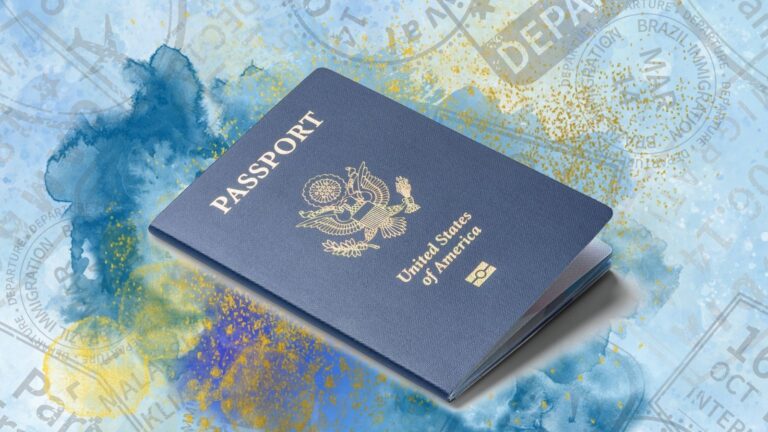3 Ways to Keep Your US Phone Number While Traveling
If you’re planning to travel or live abroad for an extended time, keeping your US phone number can save you a lot of headaches.
It’s not just about staying in touch with friends and family—your number is often tied to critical services like bank accounts and work-related apps.
Luckily, there are several ways to keep and use your US number while you’re away. In this guide, I’ll walk you through some options, breaking down the pros and cons so you can find the best fit for your situation.
Just Gone Wandering is supported by readers! This post contains affiliate links. If you click on a link and buy something, I get a small percentage at no extra cost to you. Your support helps keep this blog running— thank you! Read full disclosure here.
Why Keep Your US Phone Number?
Keeping your US phone number isn’t just a nice-to-have—it’s often a must for long-term travelers and expats.
If you’re planning to totally leave the US, cancel all your credit cards and close your bank accounts and renounce your citizenship, then you don’t need to keep your US phone number.
But if you’re just planning to travel for a few years, or if you’re living in a foreign city and still need access to your US life, then you’ll need a US phone number. It’s that simple!
Don’t believe me?
The major things you’ll need a US phone number for are:
- Two-Factor Authentication (2FA): Many banks and online services (like Gmail!) use SMS verification to confirm your identity. For example, when you log into your bank account or make an online purchase, they might send a one-time code to your number. Without access to that code, you could be locked out of your accounts. When you’re moving from country to country, having a US number ensures you can still get these important messages without issue.
- Work or Professional Stuff: Sometimes, you just need to make or receive calls to a US phone number without racking up international charges. Whether it’s calling your bank about a missing card, talking to a doctor’s office about paperwork, or handling work-related tasks, having a US-based number makes these situations so much easier.
- Keeping in Contact with Family: Even if you switch everyone over to WhatsApp or another messaging app, it’s still easiest if you’re using the same phone number they know you’ve had for years.
Okay, so now that we’ve got that covered, here’s how to keep your US number while you’re traveling out of the country.

How to Use Your US Phone Number Abroad
There’s a few ways to do this, and how you’ll do it will depend on how long you plan to be outside of the US.
If you’re going for 3 months or less, then I recommend switching to a Carrier with International Roaming (see option 1).
If you’re going to be traveling for MORE than 3 months, then I recommend switching to a Prepaid Plan and using local SIM cards for data (see option 2).
Option 1: International Roaming
These are carriers with decent roaming packages, that either have free international roaming (up to a certain point) or have international roaming plans. MOST carriers have international roaming of some sort, actually, but the better ones are:
- T-Mobile, which has automatic international roaming for tons of countries.
- Google Fi, which is known to work well BUT does cut people off after 3+ months of roaming.
I actually used T-Mobile for my first year of travel, but the international data speed was very very slow. Basically how it works is it connects to a local tower and you use the local country’s data via your own carrier, so it’s nice for texting and basic Google Map searches but doesn’t work well for data-heavy things like Instagram.
Pros
- Provides global coverage for calls, texts, and data.
- Works seamlessly for most bank verifications.
- T-Mobile treats you as if you’re still in the US, so you can send and receive SMS without extra hassle.
Cons
- More expensive than other options (e.g., \$50/month for T-Mobile).
- Google Fi might restrict or cancel your account if most of your usage is abroad (though calls and texts often still work).
Best For: Travelers who prioritize simplicity and reliable 2FA.

Option 2: Prepaid Plans + Local Data Package
This is the cheapest and best way to maintain a local US phone number while taking advantage of the cheap data SIMs you’ll find while abroad. If you’re traveling for longer than 3 months, I recommend going this route.
Here’s how it works:
- Have a basic monthly prepaid US carrier contract, even just something like 1GB/month. This is where your US phone number will be.
- Buy a data package at your destination, either through a local carrier or through an eSIM provider like Airalo.
- Set your US SIM to Wifi Calling. This means you’ll be able to get texts and make calls over Wifi.
- You’ll still have your US phone number, but all the DATA will be on the local SIM. Yay!
This is what I do! I have a prepaid plan with US Mobile, and I can still send/receive text messages through Wifi. Then I get a local data-only plan in whatever country I’m in and use that for doing everything else. My package with US Mobile is under $100/year and the local SIMs only cost me maybe $40-50/year.
Other popular carriers are Tello and Mint Mobile. Whichever you choose, I recommend signing up and testing their capabilities BEFORE you leave the US.
Pros
- Extremely affordable (less than $10/month for the cheapest packages).
- Easy to pair with an international eSIM for data.
Cons
- Requires internet access for functionality.
- May not work reliably for every bank’s verification process, so test it first.
Best For: Budget-conscious travelers who only need SMS for specific tasks.

Option 3: Use a VoIP Service
VoIP stands for Voice over Internet Protocol, which basically means making phone calls and sending messages over the internet instead of traditional phone lines. For most people, this means something like Google Voice or TextNow. It’s very affordable because it’s free to use for texting, but charges for calling.
However, I actually don’t recommend doing this because people tend to have problems getting 2FA texts or signing up for services using a VoIP phone number. It CAN be good as a backup, and I do recommend using a Google Voice number for your WhatsApp account just to have an extra safety barrier. But don’t make it your main way to keep/use your US phone number.
Pros
- Budget-friendly (often free or very low-cost).
- Accessible on any device as long as you have Wi-Fi or mobile data.
- Works for receiving SMS from most non-bank services.
Cons
- Some banks (like Ally, Chase, and Citibank) are starting to reject Google Voice numbers for identity verification. That means it won’t work for 2-Factor Authentication purposes.
- Requires a reliable internet connection.
Best For: Budget-conscious travelers who don’t need universal bank verification.
Final Thoughts
Keeping your US phone number while traveling abroad doesn’t have to be complicated. The hardest part is just deciding on what kind of package you need, and then finding a carrier that’ll work for you.
How do you manage your US phone number while traveling? Share your tips or questions in the comments below!










